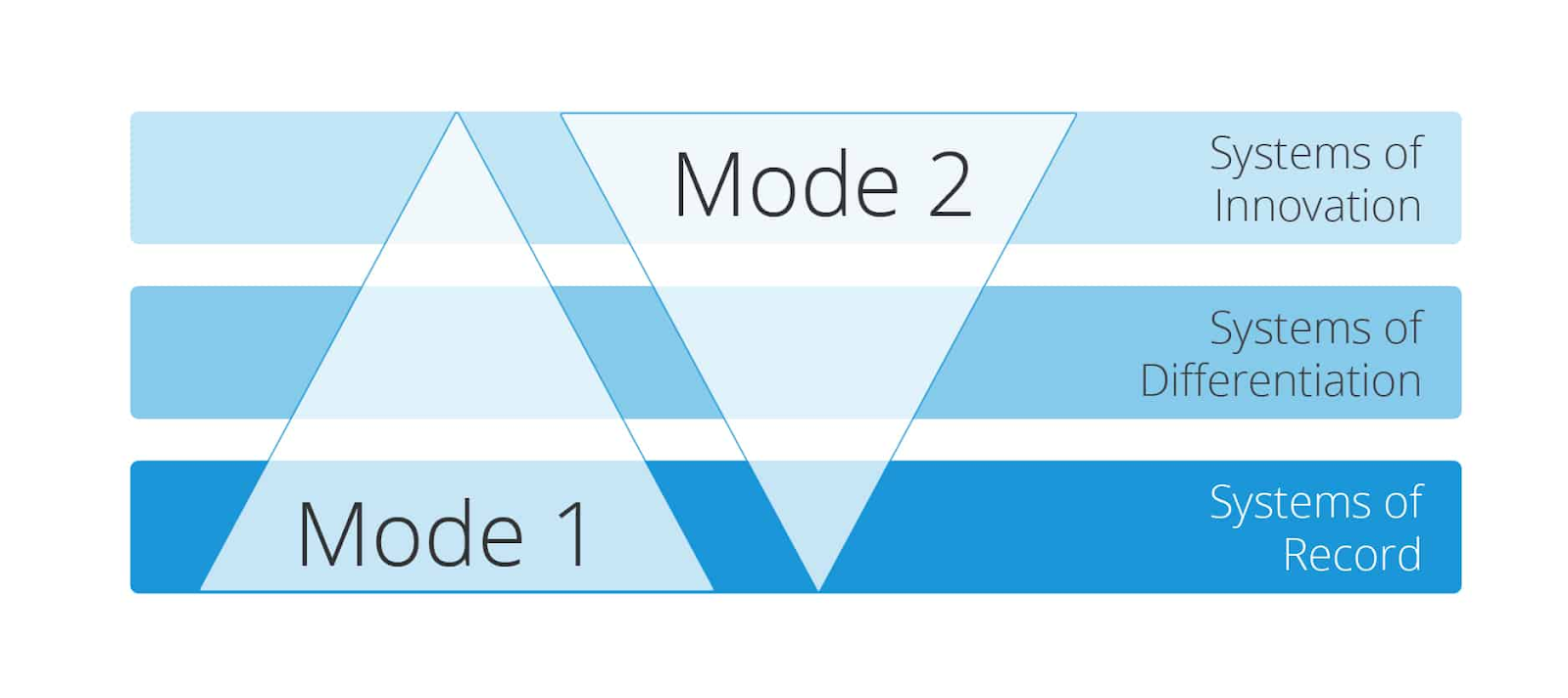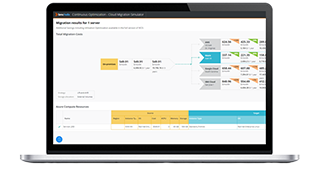Bimodal IT refers to the management practices that enable users to explore opportunities for improvement and exploit optimal strategies to deliver the best results within the applicable constraints. The practice of Mode 1: Exploration and Mode 2: Exploitation are both adopted independently and optimized for the challenges and opportunities facing IT-driven organizations.
Gartner, a leading IT research and advisory firm, introduced the concept in 2014.
In this article, we’re taking a look at the concept of Bimodal IT, its goals, and its benefits so you can consider whether it’s the right fit for your team.
Two modes of Bimodal IT
IT technologies and processes are, in general, classified as legacy and modern.
- Legacy systems and techniques are well understood, they enable predictable operations and present little risk of change.
- On the other hand, modern systems and methodologies offer new opportunities, promise efficiency improvements and operational excellence.
In an enterprise IT environment, organizations maintain both the legacy and modern IT environments. The underlying motivation of adopting separated bimodal management practices for the two contrasting mechanisms of enterprise IT is that there is no single optimal approach to managing both. Therefore, Gartner proposes the following two modes of bimodal IT:
Mode 1: Exploitation
The Mode 1 of exploitation focuses on and optimizes areas of IT that are generally predictable and understood and may require a high level of security and safety. This mode may include the traditional internal, back-office workings of IT such as:
- Securing systems and servers
- Storing sensitive data
These are operational use cases where organizations face limited flexibility to modernize applications, systems, and processes from their current legacy state. At the same time, they also fully understand the internal workings of the systems and risks involved in adopting specific changes.
Therefore, organizations can potentially optimize their approach to exploit and modernize specific components of their legacy environment. This management practice will involve calculated risks. Organizations will be well aware of the risks—such as cost, security, and performance—and can devise a risk mitigation strategy to eliminate possible uncertainties.
Mode 2: Exploration
Mode 2, in contrast, is focused on optimizing IT areas that are uncertain, experimental, or exploratory. This mode often comprises the development of external consumer technology and is often correlated with agile and DevOps cultures.
An important characteristic of practices suitable for Mode 2: Exploration management practice is the focus on innovation. Bimodal capabilities enhance the ability of organizations to focus product development and improvements in areas that present low risk in the event of change; or unprecedented business opportunities through (digital) transformation and change.
In the latter case, high risk is naturally attributed to change. Therefore, Mode 2 encourages risk mitigation strategies such as short and iterative change that creates and sustains value over the long term.
An example is the use of the Minimal Viable Product (MVP) for product development. Instead of investing significant capital into developing new products, this strategy recommends testing a hypothesis with a small working solution in its most basic and simplistic form. Based on user feedbackv, this model is upgraded iteratively until it has transformed into a market-ready product. As the stage is reached following a journey of iterative improvements based on end-user feedback, Mode 2 management practice of exploration also mitigates the risk while guiding innovation in the correct direction.
(Read more about application & software modernization.)
Bimodal IT stats
Since most organizations are already running IT workloads and apps in the cloud, together with legacy IT environments, the Bimodal IT framework is relevant for most business organizations.
Recent research finds that 81% of all organizations have already adopted a multi-cloud strategy. 84% of the organizations already operate a hybrid mix of legacy and modern cloud-based infrastructure systems. For these organizations, it makes sense to run parallel tracks of a Bimodal IT strategy where:
- Mode 1 deals with systems of records
- Mode 2 deals with Systems of Innovation
- Both modes are optimized to run systems of differentiation.

(Source)
Benefits of Bimodal IT
Industry experts agree that this shift exists. It began several years ago, and it is amplified today.
Detangling the two areas of IT does make sense in a lot of ways. Legacy systems often are responsible for the most critical business needs, like internal networks, and securing sensitive data as needed for accounting, HR, finance, etc. These areas rely on the safe environments of legacy systems. Trying something simply to be “new” or “innovative”—that certainly may fail—is a risk that these business needs often can’t take.
Bimodal IT, then, is an attempt to manage IT in a way that promotes rapid change while maintaining safety and security. These contrasting environments require different tools, processes, and skills.
For many companies, the benefits of Bimodal IT make sense. And there are plenty of benefits to delineating two IT modes:
- Speed. By defining and managing one IT area to focus wholly on delivering new solutions, they can produce rapidly, to meet business needs.
- Innovation. Because Mode 2 isn’t focused on maintaining security and handling daily issues, they can stay focused on wider problems that require innovation to solve.
- Agility. The goal for many enterprises is to disrupt a certain industry – and by defining which parts of IT focus on these disruptions, they can get there faster. Those in Mode 2 IT become adept at agile practices, so there’s less risk and overhead, and the effort is smoother, as time goes on.
- Reduces Shadow IT. When users get the solutions they need quickly, they are much less likely to use unauthorized or unproved applications and software, known as shadow IT—they aren’t bypassing IT.
Drawbacks to Bimodal IT
As with any suggestion, Bimodal IT is not a one-size-fits-all solution. Industry experts and enterprises who have tried the approach point to a few drawbacks of Bimodal IT:
- The separation can be discursive. By explicitly separating these groups, teams may battle for attention, resources, power, and influence. This can create a mentality of “us versus them” within the larger IT sphere.
- The separation can be too neat. Defining two IT modes in this way can make it seem that the modes won’t, or shouldn’t, rely on each other. For many enterprises, the reality is that an innovative, well-functioning application or software solution, the goal of Mode 2, often relies on well-oiled systems that are inherent in Mode 1.
- The separation can be confusing. Confusing teams simply for the sake of “innovation” often leads to confusion on roles and processes. This confusion can manifest as resistance to change, common when employees are told about changes that don’t make sense to them.
- The separation doesn’t guarantee innovation. Simply defining one team as innovative doesn’t mean it will just happen – if it did, everyone would be innovators. In fact, some enterprises find that innovation comes from the blending of skills and tools, not from intentionally drawn lines.
Finally, Bimodal IT as a concept is not new. For many experienced professionals, Bimodal IT reflects the key characteristics of DevOps, Agile, and other disruptive ITSM frameworks. For starters, it’s important to understand that separating the tasks should only be seen as a first step toward disruptive innovation and digital transformation that also mitigate the risks involved. It will however take a more exhaustive risk and change management strategy that also aligns with the Agile and DevOps goals of a technology company.
Still, this tension will continue to grow and shift as enterprise IT adapts, more and more, to agile business needs – which means the requirements for resources, management, and governance will continue to change as well, regardless of whether they’re siloed, as in Bimodal IT, or not.







